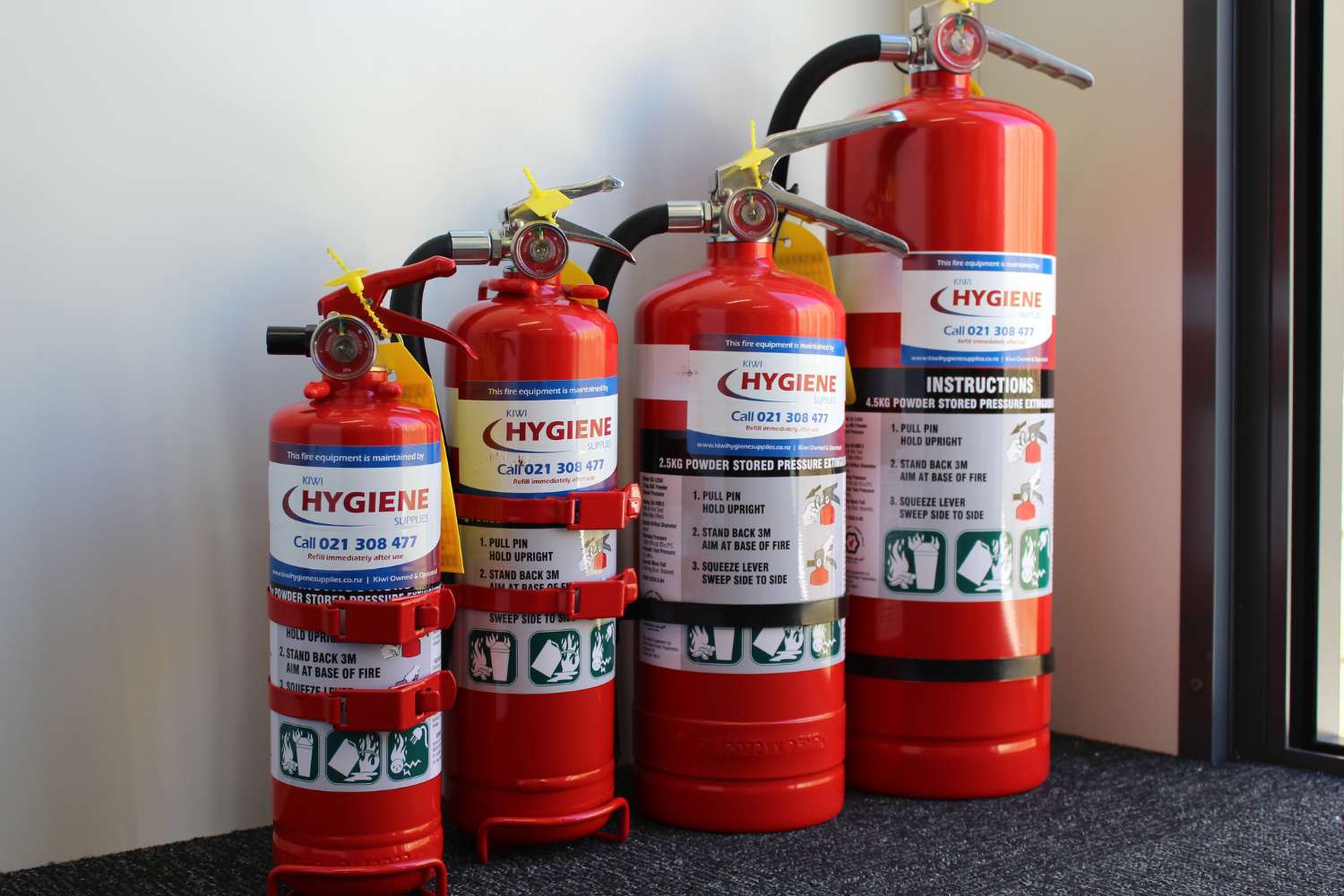
There are several types of fire extinguishers and each has its own unique usage. While some can be used in general settings, there are some that are important to have in specific situations. We’ll do a bit of a dive into the different types of fire extinguishers here so you can learn which type is right for your situation.
If you are still unsure, you are welcome to reach out to us and we’ll do our best to help you.
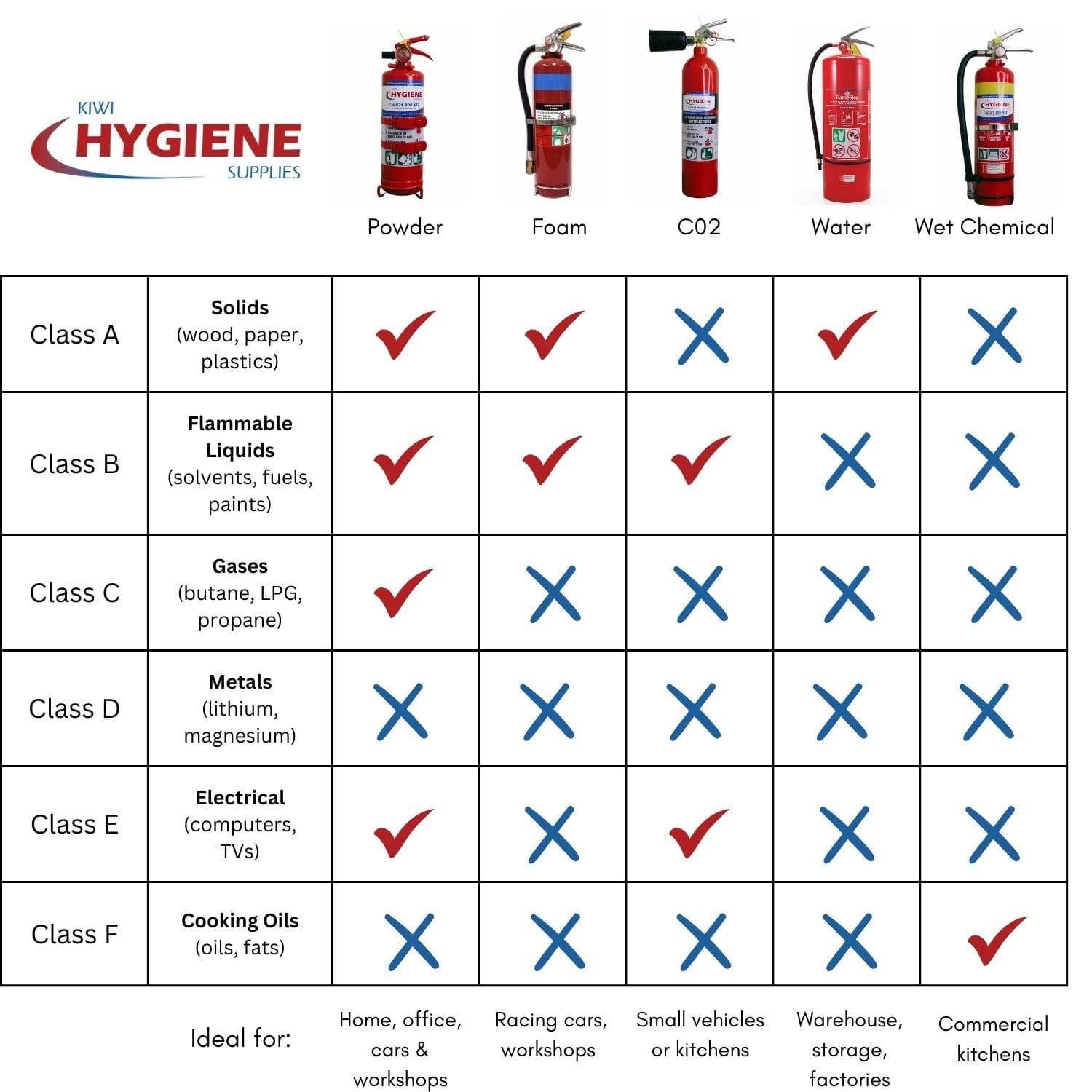
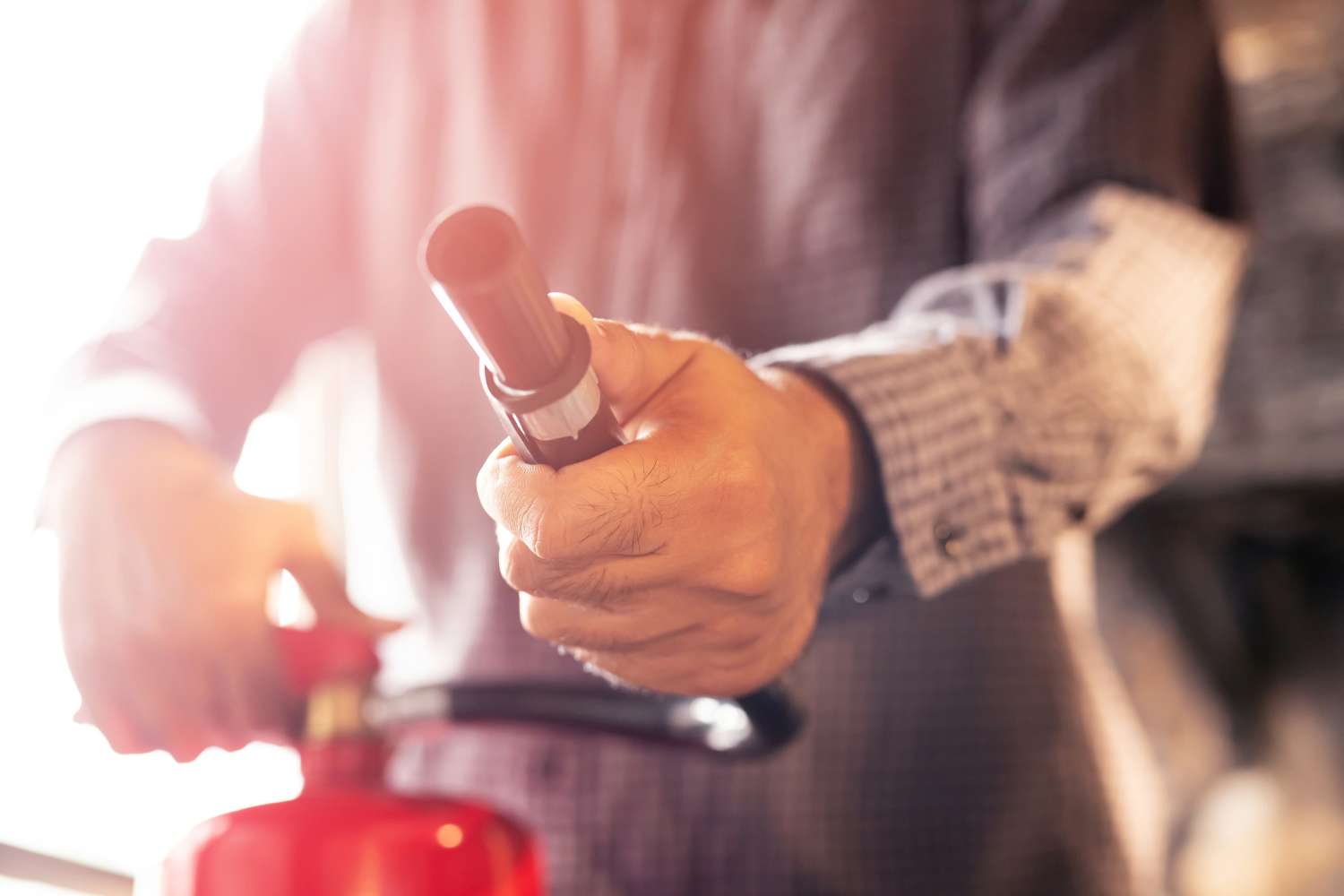
Water is the ultimate extinguisher for Class A fires. The fine spray from the unique misting nozzle greatly enhances the cooling and soaking characteristics of the agent and reduces scattering of the burning materials.
Water extinguishers are suitable fires involving paper, wood, straw, textiles etc.
The 9 litre water extinguisher is easy to use and less costly to maintain and service.
Generally recommended for warehouses, convenience stores, retail shops businesses etc.
Complies with the Australian/New Zealand Standard 1841:2
Benefits of a water mist fire extinguisher:
Water Fire Extinguishers – using this on an electrical fire puts the user at risk of an electric shock. These are not to be used on burning fat or electrical fires.
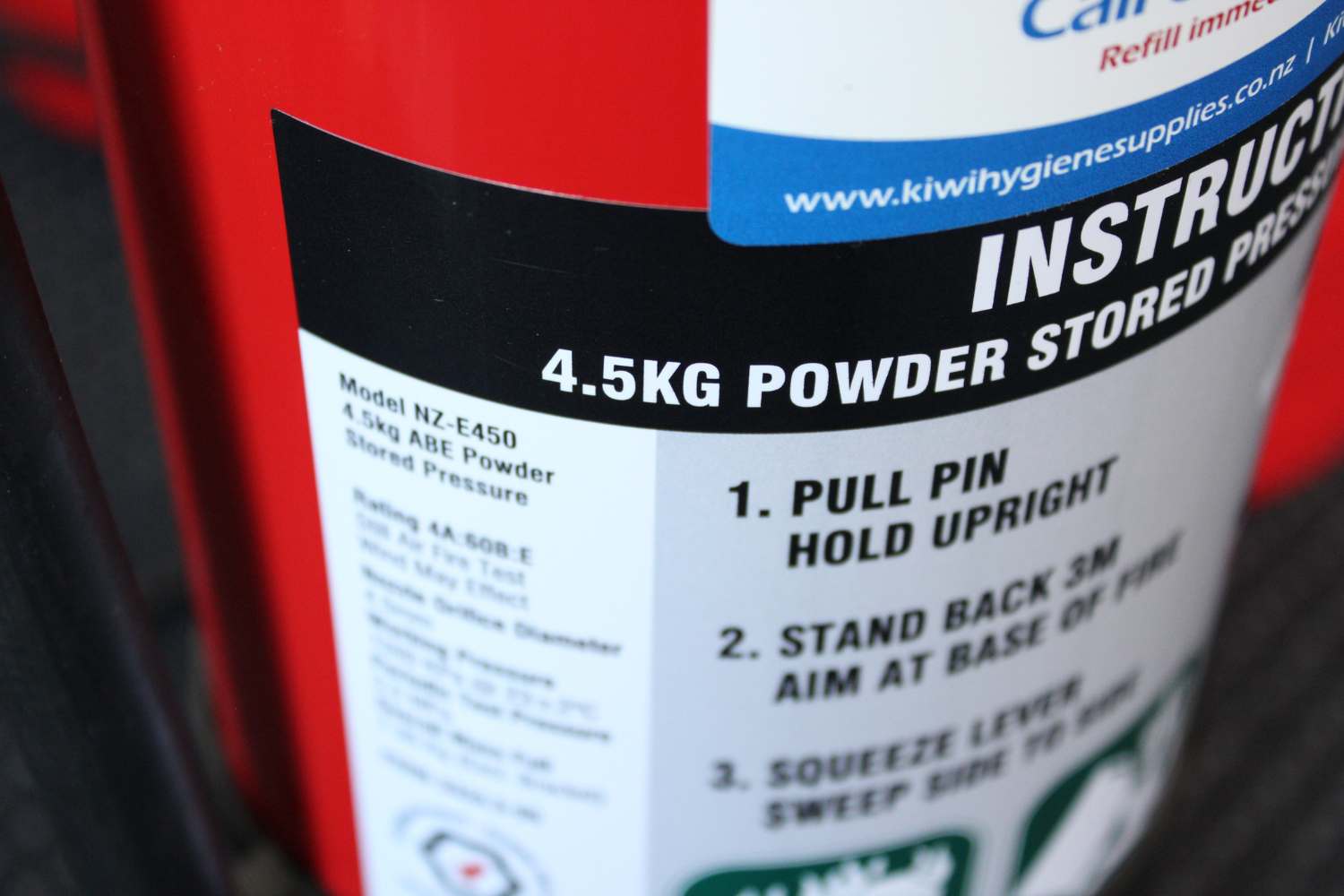
Dry Powder extinguishers work by smothering a fire and creating a barrier between the source of the fire and oxygen. However, because there’s no cooling effect with a dry powder extinguisher, there’s a small chance of the fire re-igniting.
They’re suited to open or outdoor environments where there’s a fire risk from several different sources. An example would be a garage forecourt or a workshop, where there’s a fire risk present from fuel, vehicles, and chemicals.
Pros
Cons
Dry Powder Fire Extinguishers – like CO2 extinguishers, dry powder needs to be completely extinguished otherwise it’s likely to return. The dry power does not cool a fire well and this substance must not be inhaled as it can be detrimental to your health and can cause problems with your vision. Dry powder will ruin soft furnishings and electrical hardware and is not recommended in enclosed spaces. This type of extinguisher is not to be used on fat or oil fires.
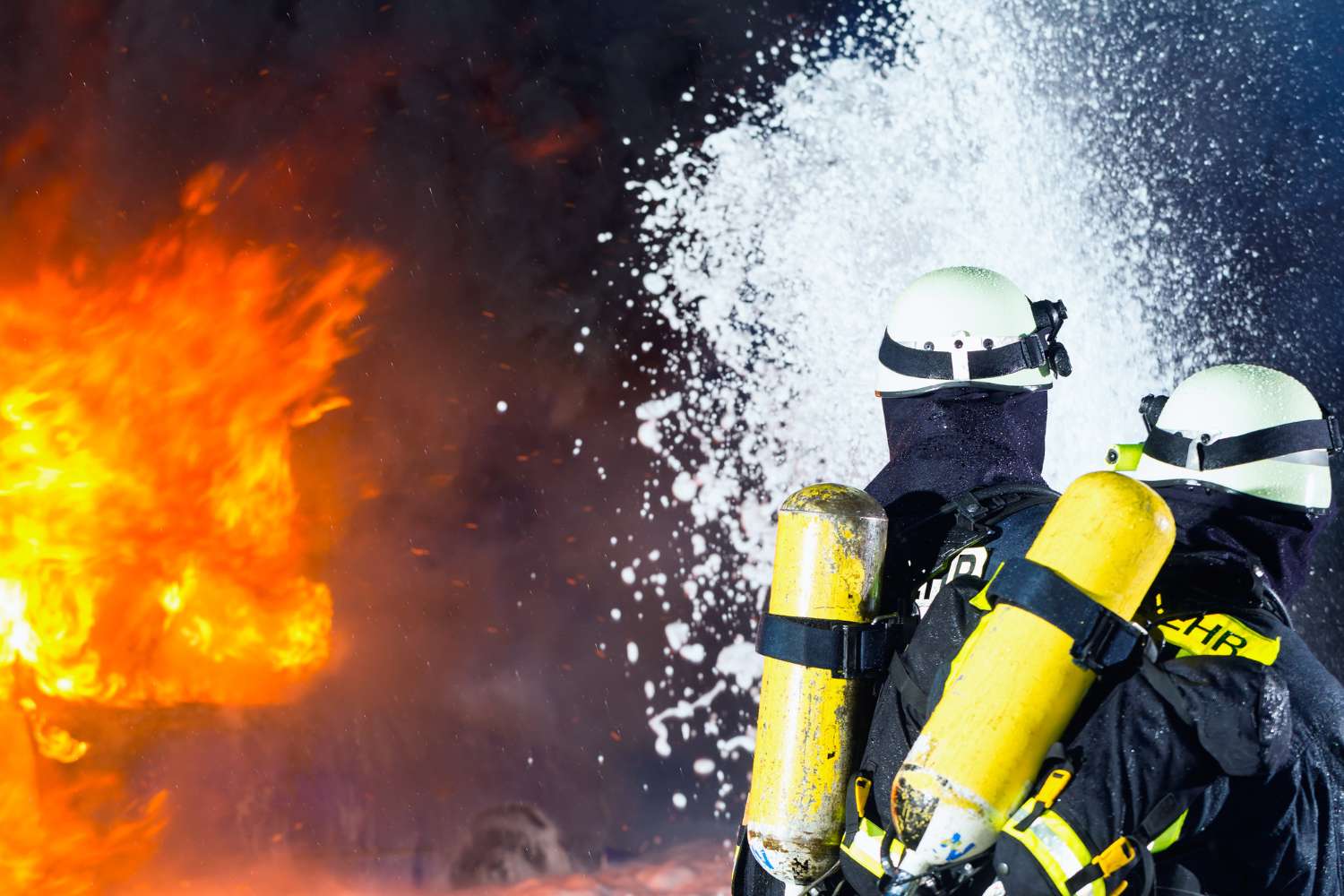
Foam fire extinguisher uses:
• Fires involving flammable solids, such as paper, wood, and textiles (‘class A’ fires)
• Fires involving some flammable liquids, such as petrol, diesel, and paint (‘class B’ fires)
• Fires involving electrical appliances IF the extinguisher has passed the 35kv conductivity test
Please note: foam extinguishers are not explicitly designed for use on electrical fires.
How do foam extinguishers work?
Foam fire extinguishers work in 2 ways.
Firstly, they are mainly water-based and so have the same cooling effect as water extinguishers, putting the fire out by lowering the temperature.
Secondly, they contain ‘Aqueous Film Forming Foam’ (this is why they are also known as AFFF foam extinguishers).
AFFF works by smothering the fire and sealing in the flammable vapours. This prevents the fire re-igniting. It also allows foam fire extinguishers to put out flammable liquid fires, by creating a barrier between the liquid’s surface and the flames.
Pros and Cons of foam fire extinguishers:
Pros:
Cons:
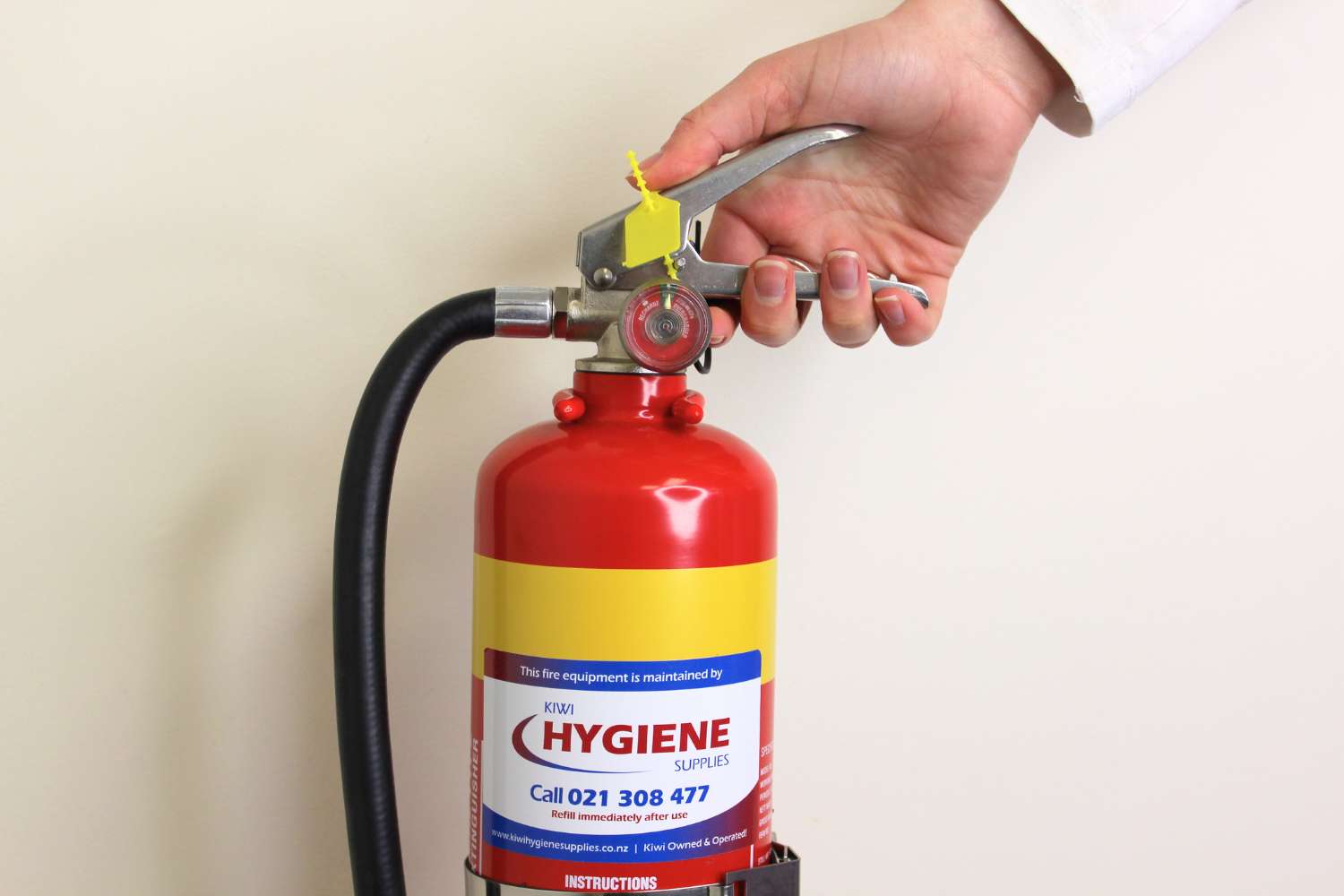
Wet chemical fire extinguishers tackle fat and grease fires in kitchens (Class F), for example deep fat fryer fires.
Wet chemical fire extinguisher uses:
• Fires involving cooking oils and fats, such as lard, olive oil, butter and vegetable oil (‘class F’ fires)
• Fires involving flammable solids, such as paper, wood, and textiles (‘class A’ fires)
Some wet chemical fire extinguishers are also cleared for use on class B fires – those involving flammable liquids, such as petrol, diesel, and paint. Check the label or ask your fire safety professional before using wet chemical extinguishers on this type of fire.
Do not use wet chemical fire extinguishers for:
• Fires involving flammable liquids (‘class B’ fires) UNLESS they are specifically cleared for this use
• Fires involving flammable gases, such as methane and butane (‘class C’ fires)
• Electrical fires
How wet chemical extinguishers work:
The ‘chemical’ element of wet chemical fire extinguishers is potassium.
Potassium salts are sprayed out as a fine mist (gently, so as not to spread the burning oil or fat), and these react to create a soapy film on the surface of the substance on fire.
This smothers the fire, with the added benefit that the mist also creates a cooling effect.
Pros and Cons of wet chemical fire extinguishers:
Pros: the only fire extinguisher suitable for use with cooking fat and oil fires.
Cons: can produce toxic fumes areas should be ventilated if a wet chemical extinguisher has been used.
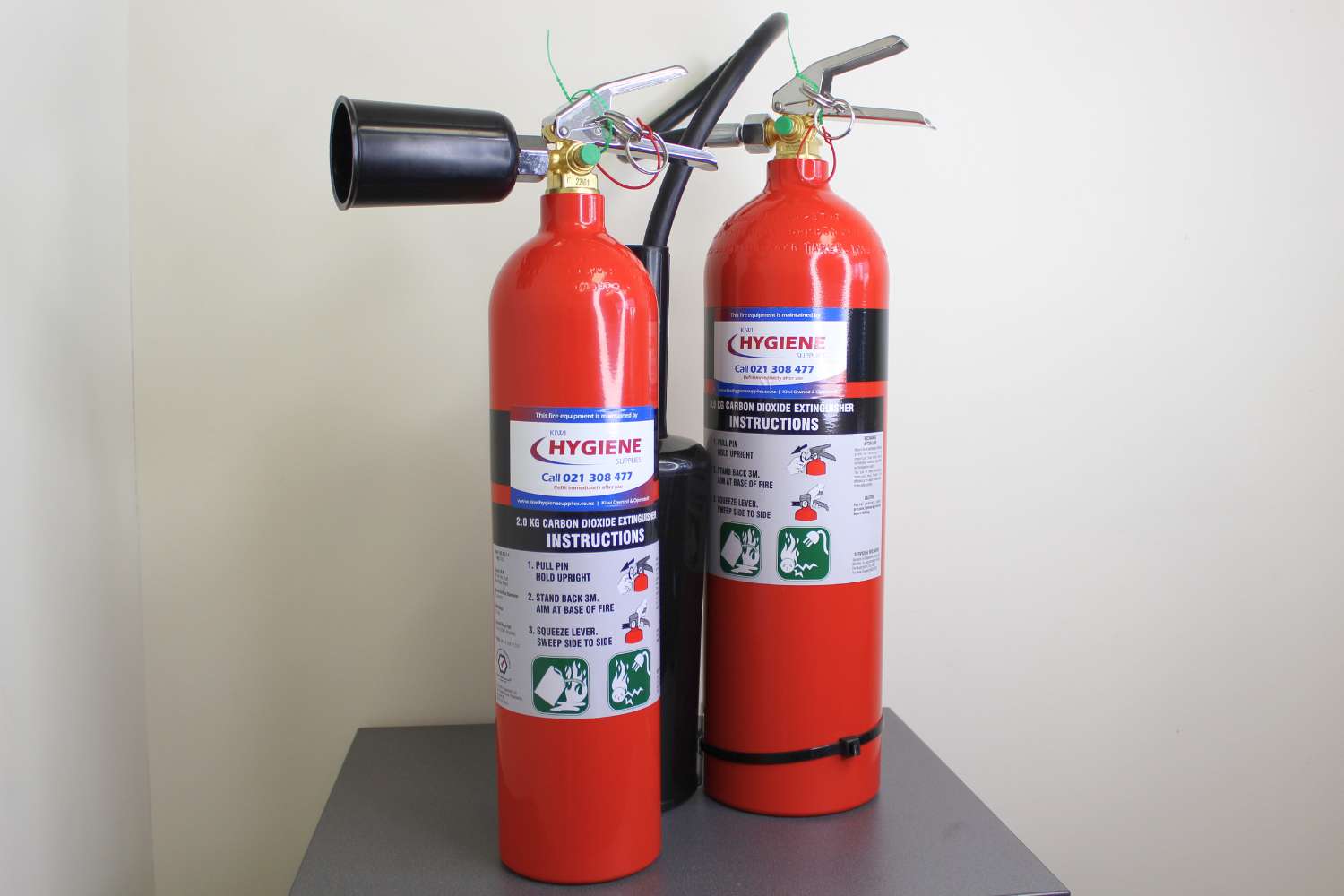
CO2 fire extinguishers are primarily used for electrical fires and often paired with foam extinguishers.
CO2 fire extinguisher uses:
• Fires involving equipment such as computers, or generators (‘electrical’ fires)
• Fires involving some flammable liquids, such as petrol, diesel, and paint (‘class B’ fires)
Do not use CO2 extinguishers for:
• Cooking fires involving oil and grease, such as chip pan fires (‘class F’ fires)
How CO2 fire extinguishers work:
CO2 fire extinguishers discharge CO2 gas, also known as carbon dioxide. This is stored in the extinguisher as a liquid, and the gas is created under pressure when the handle of the extinguisher is squeezed.
This causes the CO2 gas to emerge at great speed, which is why CO2 fire extinguishers are not recommended for chip pan fires – they could literally blast the flames into surrounding areas.
Unlike water and foam extinguishers, CO2 fire extinguishers do not work by cooling the fire and so are ineffective on fires involving flammable solids.
Instead, CO2 extinguisher work by replacing the oxygen surrounding the flames with carbon dioxide, meaning the fire can no longer burn.
Pros and Cons of CO2 extinguishers:
Pros: extremely effective on electrical fires; do not leave any residue behind when they are used.
Cons: risk of cold burns if the user holds the extinguisher by the horn; less environmentally friendly than other types of extinguisher; they replace the oxygen in the air with CO2 so risk of asphyxiation if used in confined spaces. See the following link for a full article explaining the correct use of fire extinguishers in confined spaces.
Stay up to date with industry trends, get unique discount offers and learn with us by joining our newsletter.
Copyright © Kiwi Hygiene Supplies | Privacy Policy | Terms & Conditions
Website by Innovate Digital